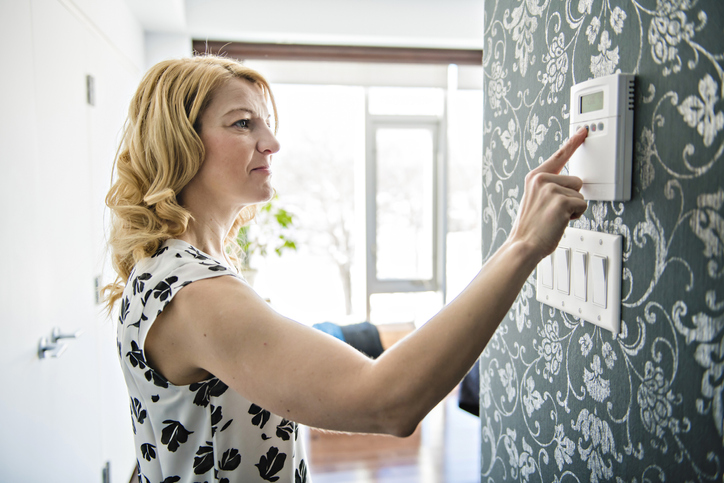Staying mindful about how and when you use electricity will put you a long way on the road toward lowering your bills. Careful homeowners can even save hundreds of dollars every year using tips like the ones below. Not every tip will work well for everyone, but consider trying as many of them as you can.
Become enlightened about energy
Turn off the lights when you’re out of the room, and reconsider exactly how many lights you need on at any one time. It may be fewer than you think. One expert estimate says that, when you leave two 100-watt incandescent lightbulbs turned off for an additional two hours daily, you can save $15 per year or more.
In addition, consider replacing your incandescent bulbs with energy-efficient LED bulbs—this shouldn’t be too difficult given that it’s increasingly harder to buy incandescent bulbs in the U.S.
You can also bring more natural light into your home by opening the curtains and blinds during the day.
Installing task lighting is another great way to bring down the intensity, and therefore the cost, of your electricity usage. Kitchens and areas where you need to see up close can benefit from this type of lighting, which can also make it easier to see the fine details of your tasks.
Use hot water more efficiently
Your hot water usage also affects your electricity bill. According to the U.S. Department of Energy (DOE), the average American home’s water heater accounts for the second-biggest portion of its electric bill: about 18 percent. The amount of electricity your water heater uses is based on its size, whether it is insulated, and its temperature settings, as well as the volume of water you use.
If two members of your family decide to shorten their time for taking hot showers by only one minute apiece, you might save $30 annually. Other simple ways to conserve your hot water usage include repairing leaky faucets, adjusting your water heater’s temperature, and remembering to not let water run while you’re scrubbing your hands and face, brushing your teeth, and shaving. Replacing your shower head with a fixture with more efficient water delivery can also be helpful.
Let your thermostat help you
Heating and cooling are the biggest drains on residential energy bills. They account for about half the average household’s power use.
You can potentially save 10 percent per year if you simply adjust your thermostat by raising it a few degrees in summer and lowering it a few in winter. Turning on a fan or pulling on a sweater instead can ensure that you’re comfortable while saving money.
According to the DOE, you should expect to realize savings of about 1 percent for every degree you adjust your thermostat seasonally up or down per eight hours. That’s why the DOE suggests moving your thermostat by 7 to 10 degrees away from normal over a period of eight hours a day. This can produce yearly savings of about 10 percent.
Use a programmable thermostat for best results, experts say. This advice busts the myth that turning your central air conditioning system or wall AC unit off during the day will save you money. In fact, the opposite is true, because the system will have to work harder as it strains to kick in from a baseline of zero.
Leave your AC on, but program the thermostat to let temperatures rise naturally during the day when you’re at work, then bring them down just before you plan to be home. Likewise, you can lower your heat at night during the winter season once you’re under the covers and program it to rise slightly when you get up the next morning.
Take control of your electronics
Did you know that keeping your laptop and other electronic devices plugged in when you’re not using them can actually account for about 10 percent of your yearly electricity consumption? Try routinely unplugging charged devices that you’re not using and you’ll be able to see the value of this advice when you save about $50 every year.
Economize your laundry
With the typical household using the washer and dryer about six hours a week, that translates to well over $100 annually for doing laundry alone. This is true even if you have state-of-the-art, efficient appliances. Applying a little thought in the laundry room can help reduce these bills significantly, though.
Run full loads by consolidating items into as few loads as possible, in both the washer and the dryer. Hint: Your dryer works with greater efficiency when it’s about three-fourths full. Wash with cold water whenever it’s feasible to do so. In addition, air-drying your wash can save you well over $50 a year, according to one recent estimate. Consider investing in a drying rack or clothesline.
Heat-proof your kitchen
There are plenty of ways to save energy in your kitchen, too. For starters, stop using the super-expensive heat-dry setting on your dishwasher, and make sure the sealings on your fridge and other appliances are air-tight to minimize leaks. Cook in your microwave instead of the oven as much as possible, and avoid using the oven in summer entirely if you can, to keep your home’s temperature comfortable and avoid adding to the heat.
Don’t forget passive cooling
Last but not least, moderate your home’s interior and exterior temperature naturally through upkeep of your insulation and ductwork. You can also use blinds and other window coverings for shade, and plant shade trees outside.
Use your zip code to find renewable electricity plans from Verde Energy.



